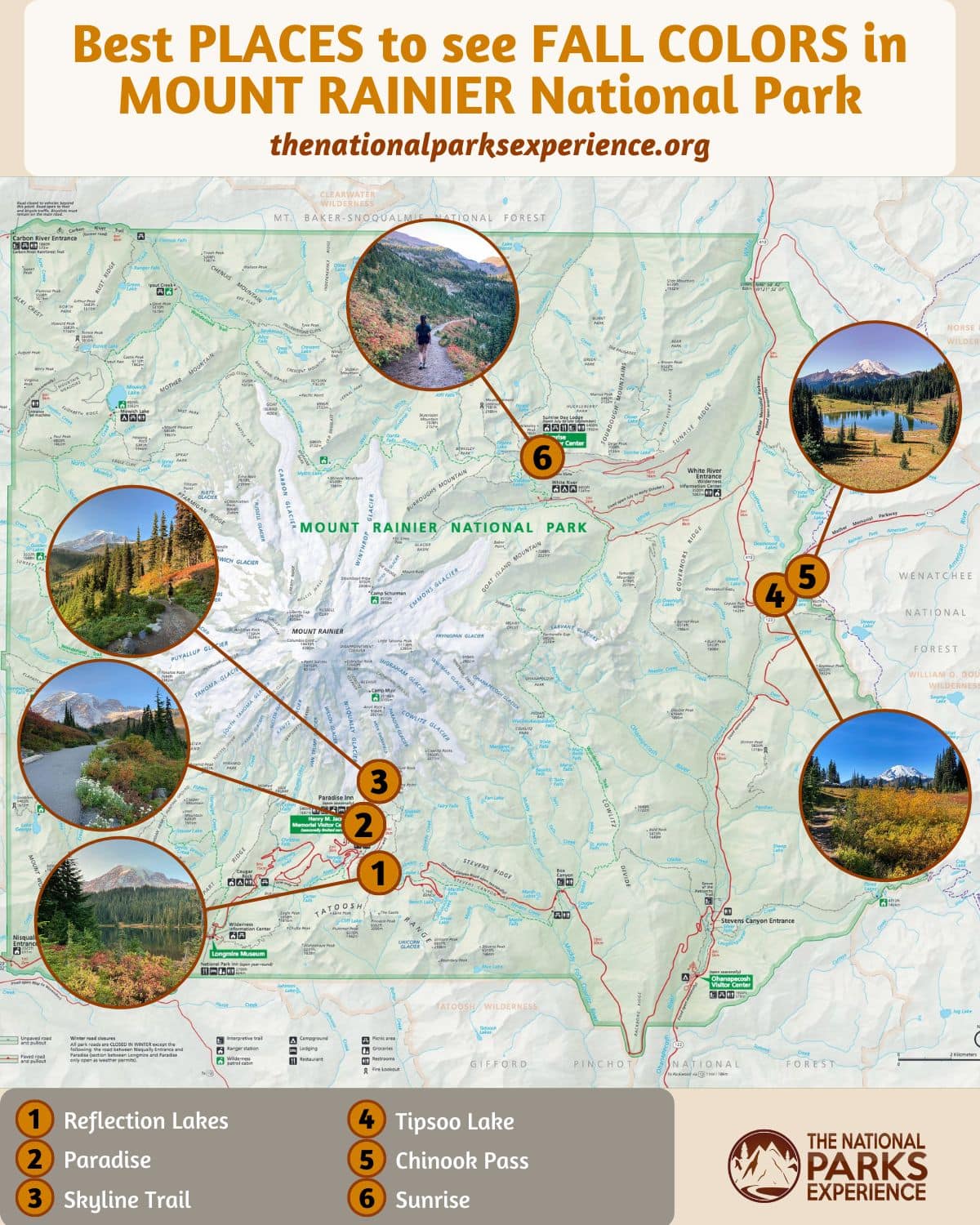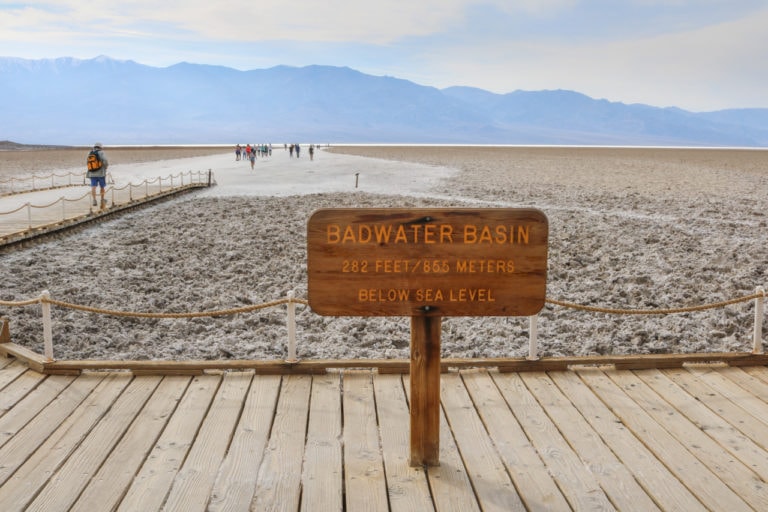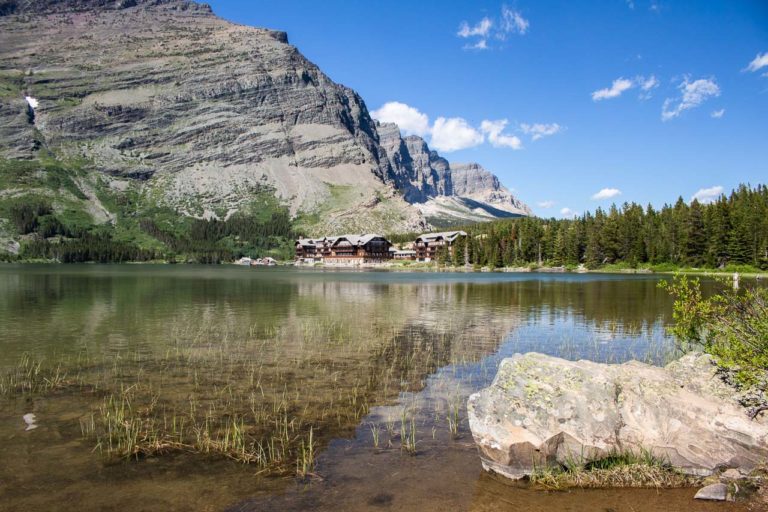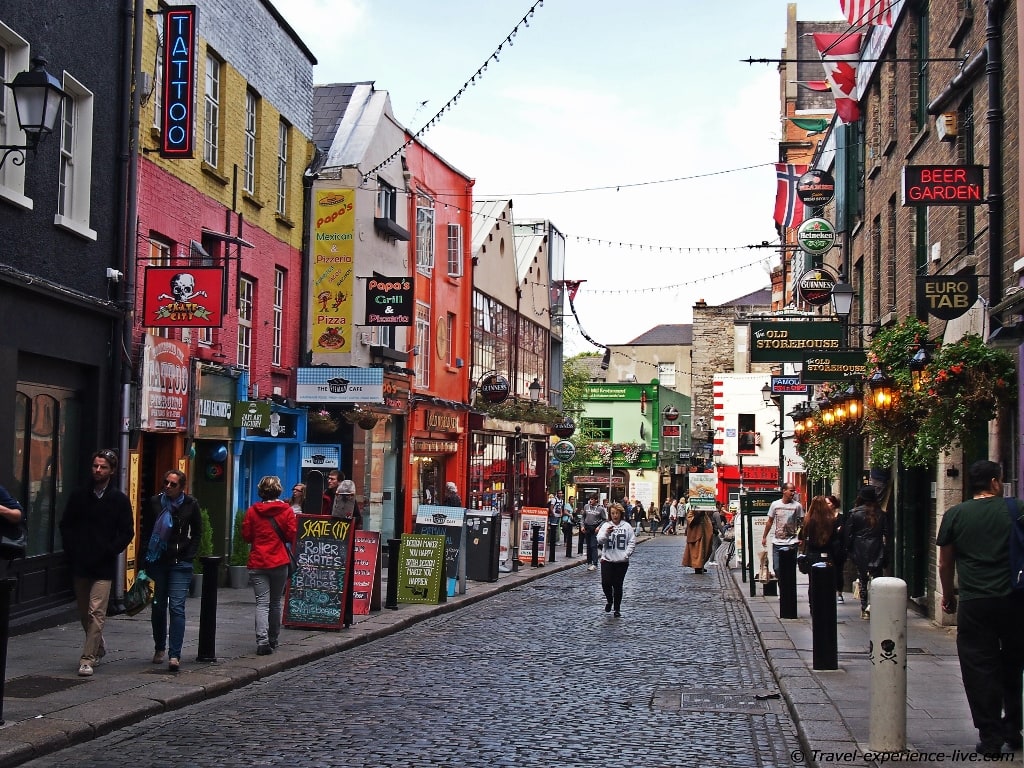Where to Find the Best Fall Foliage in Mount Rainier National Park
Mid-September marks the unofficial start of the fall season in Washington’s Mount Rainier National Park. As the days slowly grow shorter and temperatures drop, the park’s high-elevation slopes begin showing vibrant fall foliage.
Despite the park’s lack of sprawling broadleaf forests, there’s more than enough other deciduous vegetation at Mount Rainier to put on quite a spectacle in the fall.
More specifically, it’s the huckleberries and stands of tamarack, a deciduous conifer, that steal the show here in autumn. Below, you’ll find the best places to see fall foliage in Mount Rainier National Park, including a hike or two.

This blog post about the best places to see fall foliage in Mount Rainier National Park contains affiliate links. You can read more about our Terms of Use / Disclosure here.
What Is the Best Time to See Fall Foliage in Mount Rainier National Park?
Fall is arguably the best time of year to visit Mount Rainier National Park. Especially early-October is a gorgeous period to explore and hike in the park.
The ubiquitous huckleberries start turning red in late-September, usually peaking in early to mid-October.
Additionally, after the brief and sunny summer season, snow cover at high elevations is at its lowest. This allows you to hike to high-altitude places that are inaccessible during the rest of the year.
Combined with beautiful fall foliage in Mount Rainier, as well as active wildlife, these amazing hiking opportunities make a visit to Mount Rainier National Park in fall an unforgettable experience.
Again, I recommend early-October for the best fall views and widest range of things to do at Mount Rainier in fall.
However, if you’d like to see the extraordinary tamarack turn yellow, you’ll have to wait until November. After all other fall colors are gone, this deciduous larch species transforms into bright yellow.
Their presence is quite obvious in November, when their contrasting yellow colors make them stand out starkly from their evergreen neighbors. They’re particular stunning after a dusting of snow in the mountains.
- Early-October (huckleberries and other shrubs and small trees)
- November (tamarack (western larch))
Track fall colors across the United States with this amazing fall foliage map!
6 Best Places to See Fall Colors in Mount Rainier National Park
You can immerse yourself in the beautiful fall foliage of Mount Rainier National Park at a number of locations.
They include the park’s most popular areas, Paradise and Sunrise, a hiking trail and a few roadside viewpoints.
1. Fall Foliage at Reflection Lakes
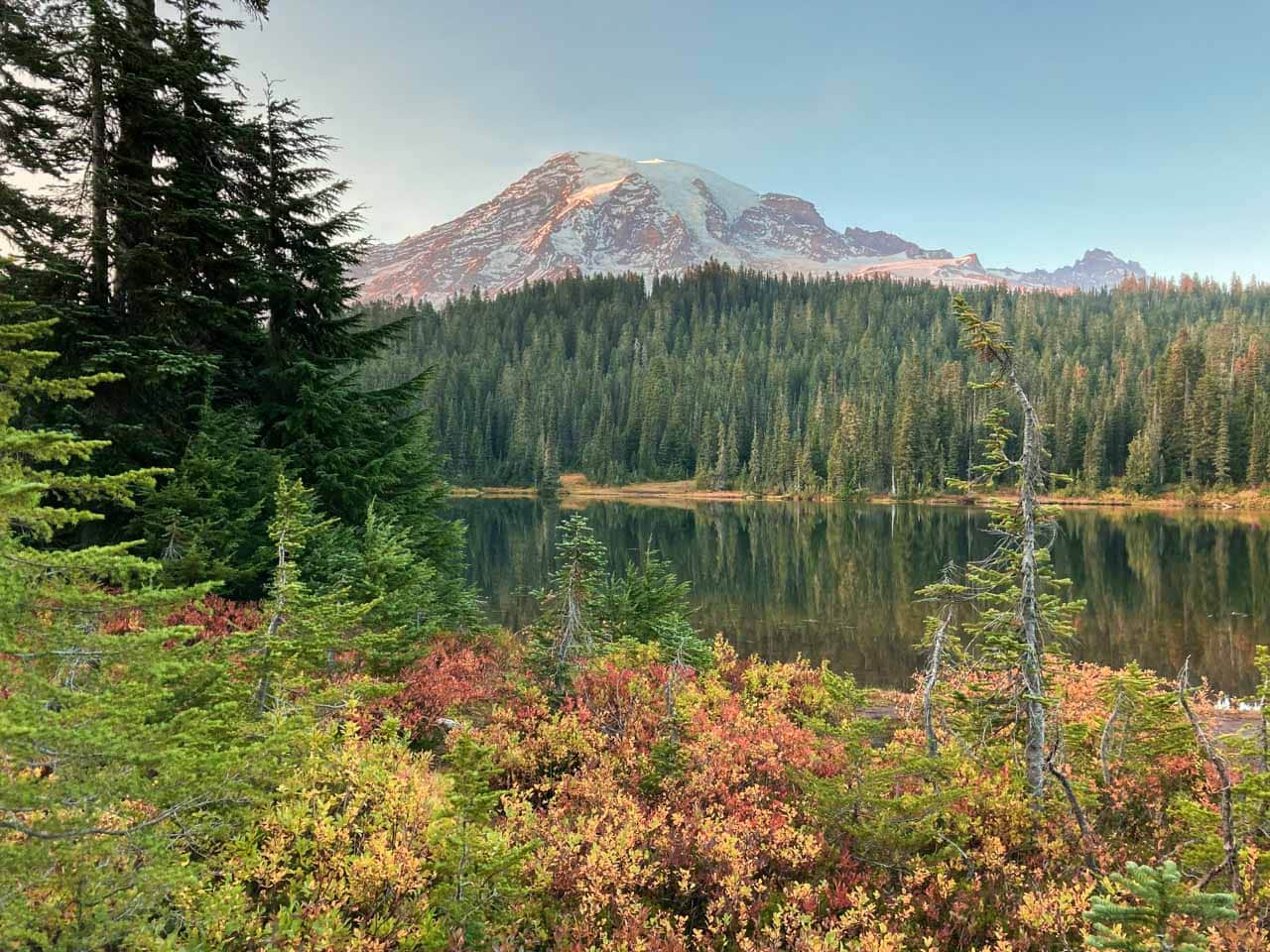
Located below Paradise on the Stevens Canyon Road, the popular Reflection Lakes offer some of the most famous views of Mount Rainier.
The best time to visit this beautiful location is either early in the morning or late in the evening. This is when the lakes’ water usually is at its stillest, thus providing the nicest reflections of Mount Rainier.
A variety of bushes and shrubs lines the lakeshores, adding some of that gorgeous fall foliage to the landscape.
If you’re up for a short hike, consider hiking the Reflection Lakes Loop. This 2.8-mile loop starts at the Reflection Lakes parking area and is best hiked in a clockwise direction.
It’s a combination of the Wonderland Trail, the Lower Lakes Trail and the High Lakes Trail, as well as the Mazama Ridge Trail back down.
2. Fall Scenery at Paradise
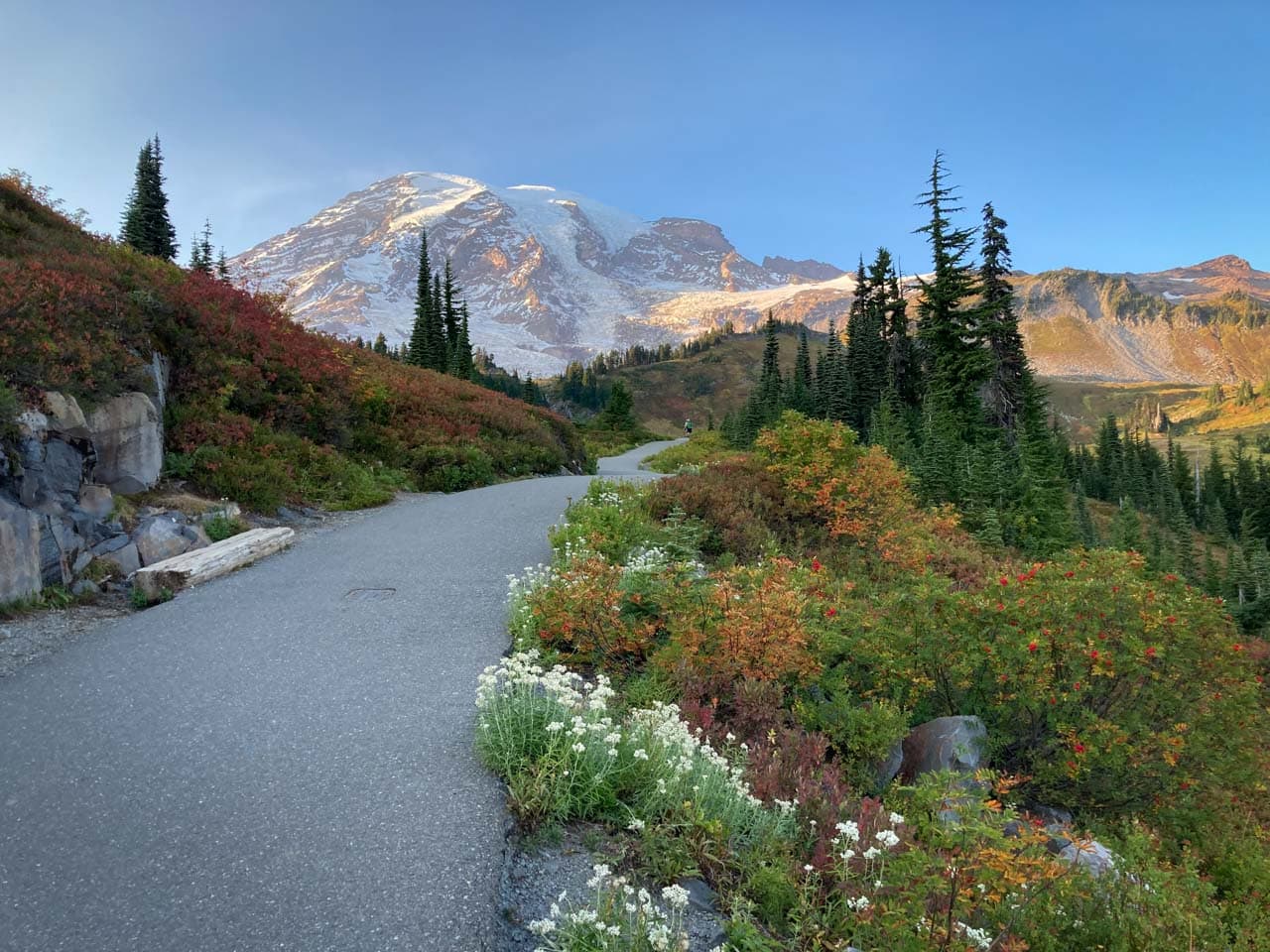
Situated on the south slopes of Mount Rainier, Paradise is arguably the park’s main visitor area. It is usually open year-round, covered in wildflowers in spring, boasting beautiful fall foliage in autumn and providing various winter sports activities in winter.
The Henry M. Jackson Memorial Visitor Center and Paradise Inn are the touristic heart of the area, while a network of trails offers access to subalpine meadows and viewpoints high up on the mountain.
In fall, the shrubland vegetation of Mount Rainier’s Paradise Park turns into a brilliant palette of oranges and reds.
Walk some of the short and paved trails through the meadows, see scenic Myrtle Falls and take in the gorgeous mountain views. This is easily one of the greatest places to immerse yourself in the gorgeous fall foliage of Mount Rainier National Park.
3. Fall Landscapes on the Skyline Trail
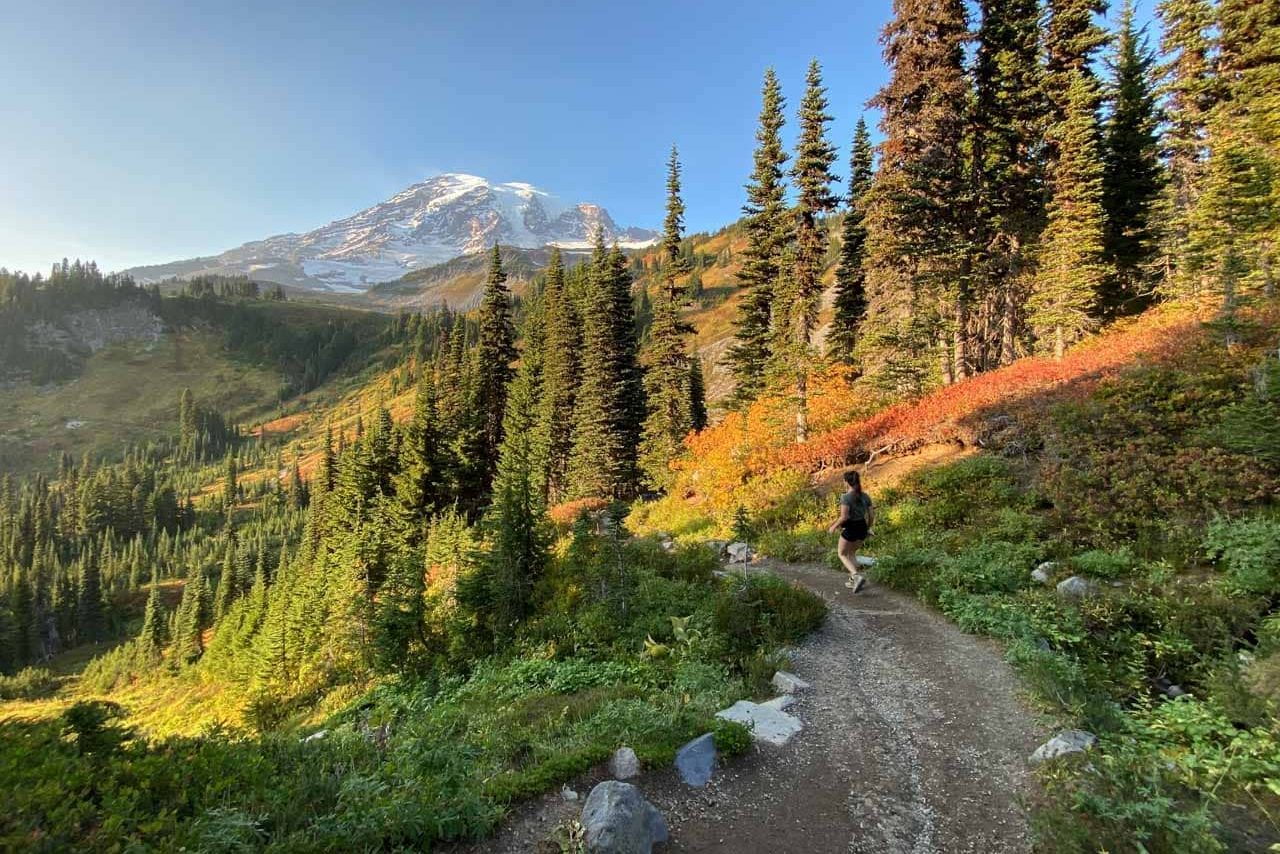
If I had to pick the single best fall hike in Mount Rainier National Park, I wouldn’t hesitate a second. Nothing beats the sensational Skyline Trail that runs through and loops around Paradise Park. This trail is so spectacular we hiked it twice!
The Skyline Trail starts directly behind the Jackson Visitor Center and Paradise Inn at Paradise, where a huge parking lot accommodates the hundreds of visitors that swarm this popular area from summer through fall.
In summer, this is one of the best places to see subalpine wildflowers at Mount Rainier, while in October, the fall colors are absolutely glorious.
After he visited the Paradise area at Mount Rainier, the legendary conservationist John Muir called it:
“…the most luxuriant and the most extravagantly beautiful of all the alpine gardens I ever beheld in all my mountain-top wanderings”
– John Muir, 1889
On this 5.5-mile loop, you’ll walk through brilliant patches of huckleberries, across lush alpine meadows and past panoramic viewpoints.
Highlights include the huge Nisqually Glacier and Panorama Point, which offers a view that includes the Tatoosh Range and other Cascade volcanoes like Mount Adams, Mount St. Helens and Mt. Hood.
Hike the Skyline Trail in a clockwise direction to save the best for last: picturesque Edith Creek and Myrtle Falls with Rainier rising up in the background.
Almost the entire way, you’ll be accompanied by vivid fall foliage, from vine maple oranges to huckleberry reds.
4. Fall Colors at Tipsoo Lake
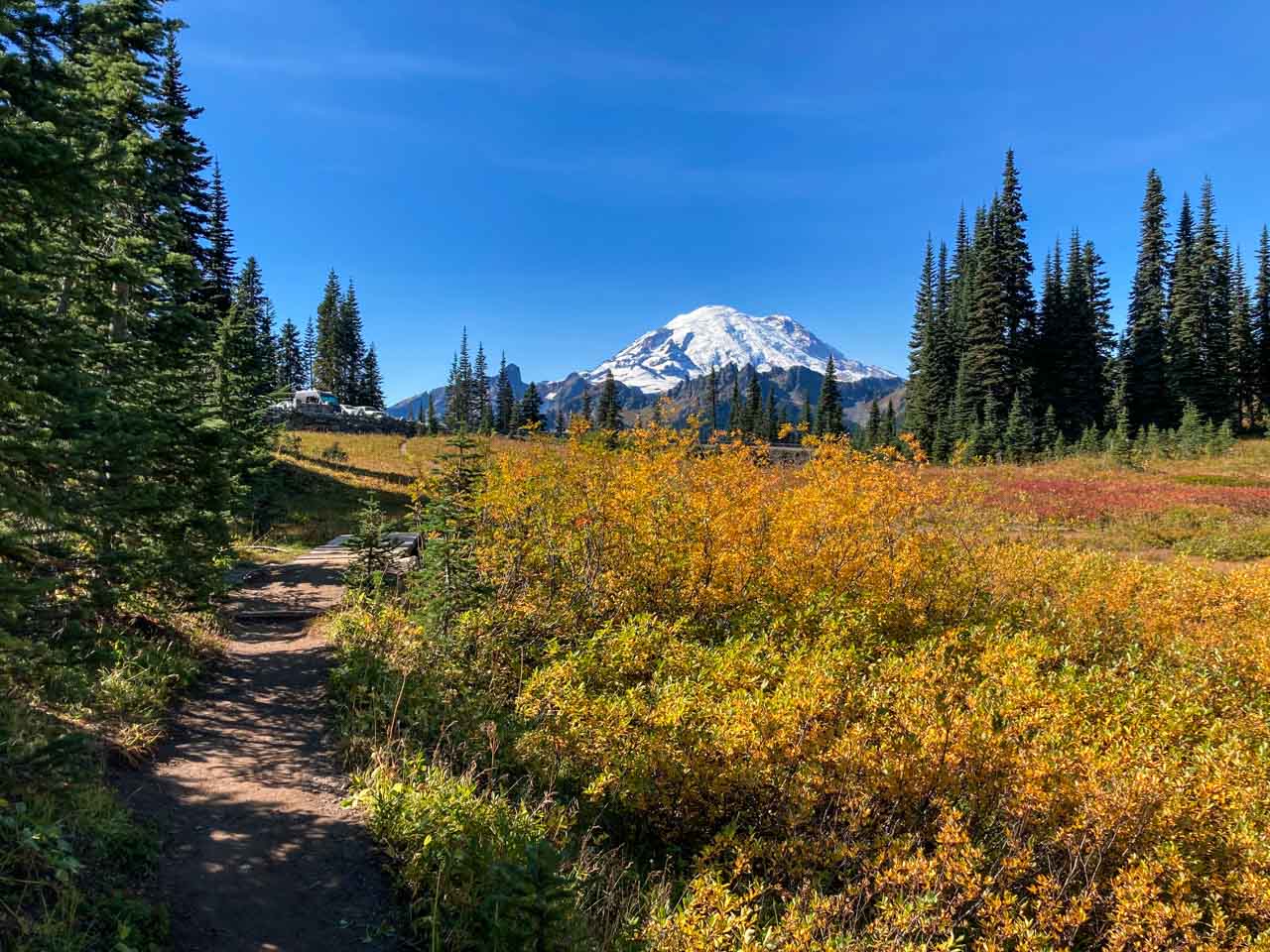
Tipsoo Lake might just be my favorite spot to enjoy Mount Rainier fall colors. This beautiful little lake sits below Chinook Pass in the east of the park, providing visitors with a perfect picnic spot.
There are picnic tables at the spacious parking lot, while a flat and easy trail loops around the lake. Take a stroll in this peaceful area, soaking up the wonderful autumn colors provided by the area’s abundant huckleberries and other shrubs.
Additionally, Tipsoo Lake is also a nice spot for bird watching, while you might also spot deer and even a black bear here at dusk.
5. Fall Views from Chinook Pass
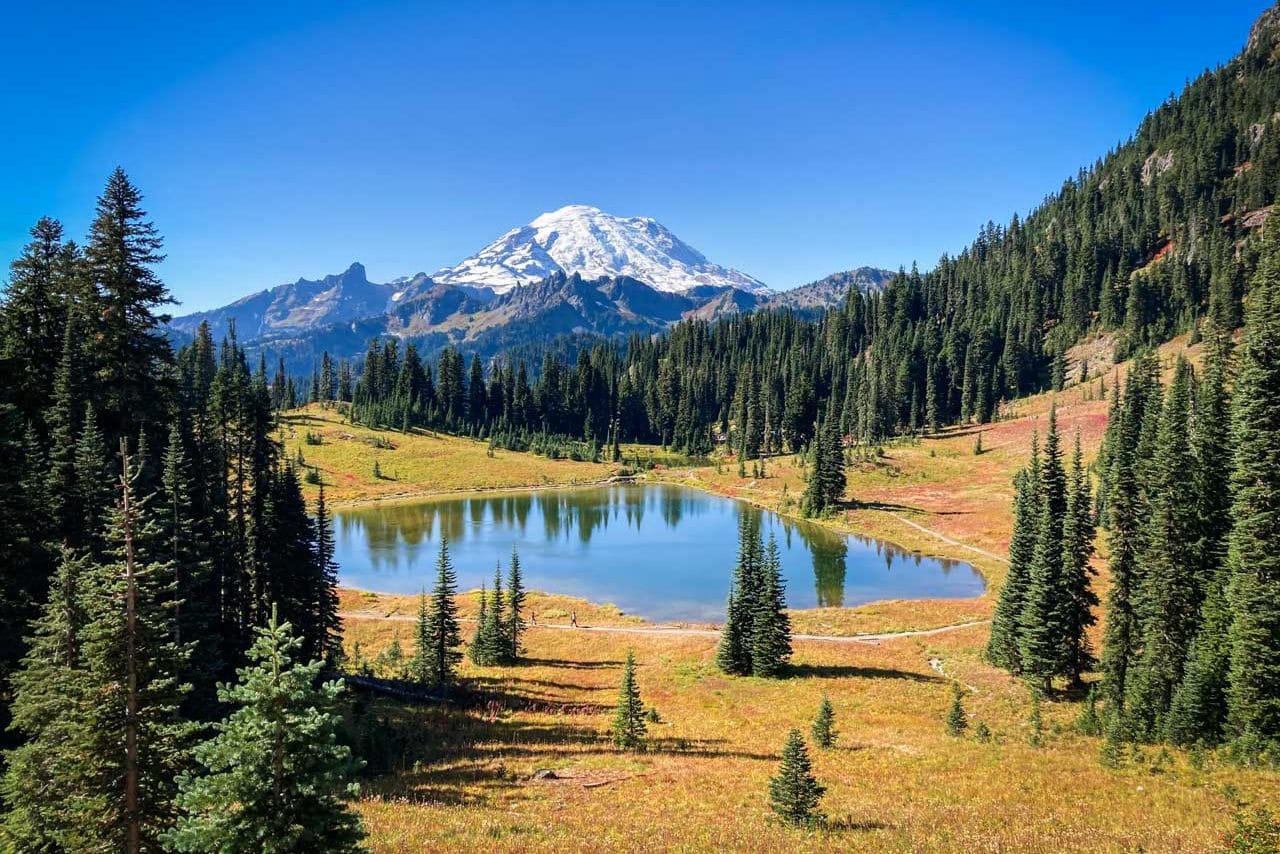
Chinook Pass is essentially the east entrance to Mount Rainier National Park. This high-elevation road, Route 410, enters the park from Wenatchee National Forest to the east, and what an entry it is.
As soon as you enter the park—you can also drive up from the main road in the park’s east side—a spectacular panorama opens up, dominated by massive Mount Rainier itself.
There’s plenty of parking space along the road below Chinook Pass. Walk along the edge of the parking lot and take in this iconic view, which is especially scenic during a Mount Rainier sunset.
Tipsoo Lake shimmers prettily below, while Rainier towers in the background. This is one of the most iconic overlooks in the national parks, offering jaw-dropping views in the fall.
Vibrant huckleberry bushes provide most of the fall colors in this corner of Mount Rainier National Park. Additionally, it’s also one of a few spots in the park where you can see the extraordinary autumn colors of tamaracks in November.
6. Fall Hikes at Sunrise
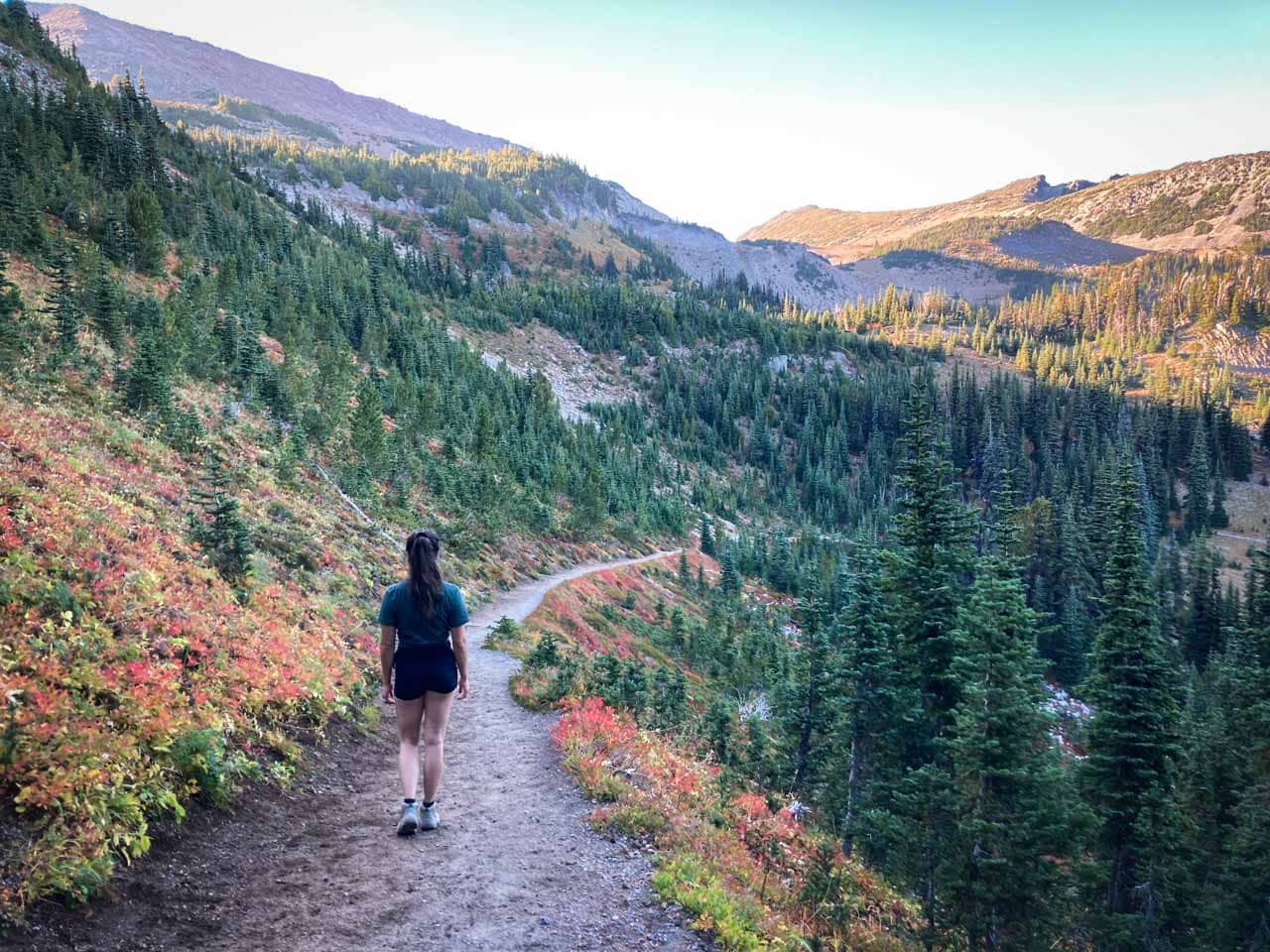
Sitting 6,400 feet above sea level on the northeastern slope of Mount Rainier, Sunrise is the highest area accessible by vehicle in Mount Rainier National Park.
It is home to expansive mountain meadows, flanked by stands of forest and rocky slopes. The open areas at Sunrise feature collections of huckleberries and other small shrubs, which take on wonderful colors in late-September and early- October.
Several trails meander through this area, which is known as Yakima Park, allowing you to experience the fall foliage up close.
Longer hikes lead to places like the Mount Fremont Lookout, Burroughs Mountain, and Berkeley Park, running through patches of colorful vegetation. The area around Shadow Lake is a particularly beautiful place to enjoy the fall foliage at Mount Rainier.
Map of the Best Places to See Fall Colors in Mount Rainier National Park
